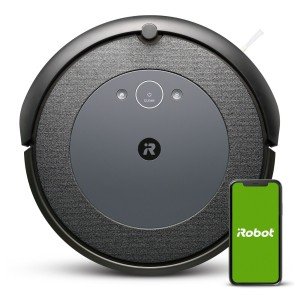The No. #1 Question That Everyone In Self-Cleaning Robot Vacuums Should Be Able To Answer
Self-Cleaning Robot Vacuums: Revolutionizing Home Cleaning
In a period where technology constantly improves day-to-day chores, one impressive innovation stands out— self-cleaning robot vacuums. These innovative gadgets are not simply a luxury; they represent a substantial action towards smart home living, offering convenience and effectiveness. As more homeowners accept automation, the understanding of self-cleaning robot vacuums becomes vital. This article looks into the operations, benefits, and functions of self-cleaning robot vacuums, directing customers toward notified decisions.
Understanding Self-Cleaning Robot Vacuums
Self-cleaning robot vacuums are self-governing devices developed mostly for floor cleaning. Unlike standard vacuum cleaners that need manual operation, these robots perform their responsibilities with very little human intervention. Geared up with innovative innovation, including sensors and expert system, self-cleaning robot vacuums navigate through homes, recognizing and taking on dirt and debris successfully.
How Do They Work?
These devices run through a series of steps, guaranteeing thorough cleaning with every run.
- Navigation: Through mapping and sensing units, self-cleaning vacuums chart the home's design.
- Cleaning: They use brushes and suction to get dirt from different floor surfaces, such as wood, tile, or carpet.
- Self-Cleaning: After finishing their cleaning cycle, they return to a docking station where particles is emptied into a bag or container, typically eliminating the requirement for users to touch dirt.
- Smart Features: Many designs incorporate with home automation systems, enabling scheduled cleaning, push-button control, and updates through smart device apps.
Key Features of Self-Cleaning Robot Vacuums
To comprehend the appeal of self-cleaning robot vacuums, it's necessary to explore their standout features:
Feature
Description
Autonomous Navigation
Efficient in mapping rooms and avoiding obstacles for effective cleaning.
Self-Charging
Immediately go back to its charging dock when the battery is low.
HEPA Filtration
Geared up with high-efficiency filters that trap allergens and enhance air quality.
Smart Connectivity
Can be managed via mobile phone apps or smart home systems like Alexa or Google Home.
Numerous Cleaning Modes
Offers different settings for selective cleaning, including area cleaning and edge cleaning.
Benefits of Self-Cleaning Robot Vacuums
The rise of self-cleaning robot vacuums brings numerous notable benefits that cater to modern-day lifestyles:
- Time-Saving: Automating cleaning jobs indicates users invest less time vacuuming floorings, allowing them to focus on other activities.
- Consistent Cleaning: With set up cleaning, homes remain consistently tidy, assisting to keep a healthy living environment.
- Minimized Allergens: The HEPA filters used in numerous self-cleaning designs record dust, animal dander, and other irritants, enhancing indoor air quality.
- Convenience: The self-emptying feature decreases the frequency of maintenance and user interaction with dirt and debris.
- Adaptability: Many self-cleaning vacuums are geared up to handle various surface areas, ensuring they can preserve tidiness throughout the home.
Popular Self-Cleaning Robot Vacuum Models
When exploring the world of self-cleaning robot vacuums, different models accommodate various requirements and budgets. Below is a list of popular alternatives:
- iRobot Roomba i7+: Notable for its sophisticated navigation and the capability to empty its dustbin instantly.
- Ecovacs Deebot Ozmo T8 AIVI: Offers powerful suction combined with mopping capabilities for comprehensive cleaning.
- Roborock S7: Features advanced mapping technology and a self-emptying base, ensuring minimal intervention.
- Shark IQ Robot Self-Emptying: Known for its outstanding worth and reliable dirt detection technology.
Elements to Consider Before Purchasing
Picking the right self-cleaning robot vacuum includes understanding specific needs. Here are some factors to consider:
- Flooring Type: Ensure the design appropriates for the types of floors in your house (e.g., carpet, wood).
- Family pet Ownership: Consider vacuums with strong suction and tangle-free technology for homes with family pets.
- Smart Features: Assess the smart home combination alternatives offered based upon your tech preferences.
- Battery Life: Look for models with long battery life to support larger spaces.
- Upkeep and Filters: Consider how often filters require changing and how simple it is to empty the dustbin.
Frequently Asked Questions About Self-Cleaning Robot Vacuums
1. How frequently should I run my robot vacuum?
Most makers advise running the robot vacuum day-to-day or several times a week, depending upon the amount of foot traffic and family pet activity in your house.
2. Are robot automatic vacuum cleaner on carpets?
Yes, many self-cleaning robot vacuums are specifically designed for carpets, including effective suction and brushes to lift dirt successfully.
3. Do I require to vacuum before utilizing a robot vacuum?
While self-cleaning robot vacuums can deal with percentages of debris, it's a good idea to clear larger items or challenges to ensure optimum performance.
4. How do bagless robot vacuum keep my robot vacuum?
Regularly examine and clean up the brushes, empty the dustbin, and change filters as required to keep the vacuum operating effectively.
5. Can self-cleaning robot vacuums mop?
Some designs come with mopping abilities, enabling them to vacuum and mop at the same time, providing comprehensive cleaning.
Self-cleaning robot vacuums exemplify the future of home cleaning, combining innovation with convenience. Their capability to autonomously navigate, clean, and self-maintain makes them a noteworthy addition to any home. As these gadgets continue to progress, property owners will discover increasing value in their performance and effectiveness. Comprehending their features and benefits will empower customers to choose the ideal design to suit their cleaning requirements and way of life. As the market grows, self-cleaning robot vacuums are set to become an integral part of modern-day domestic life.
